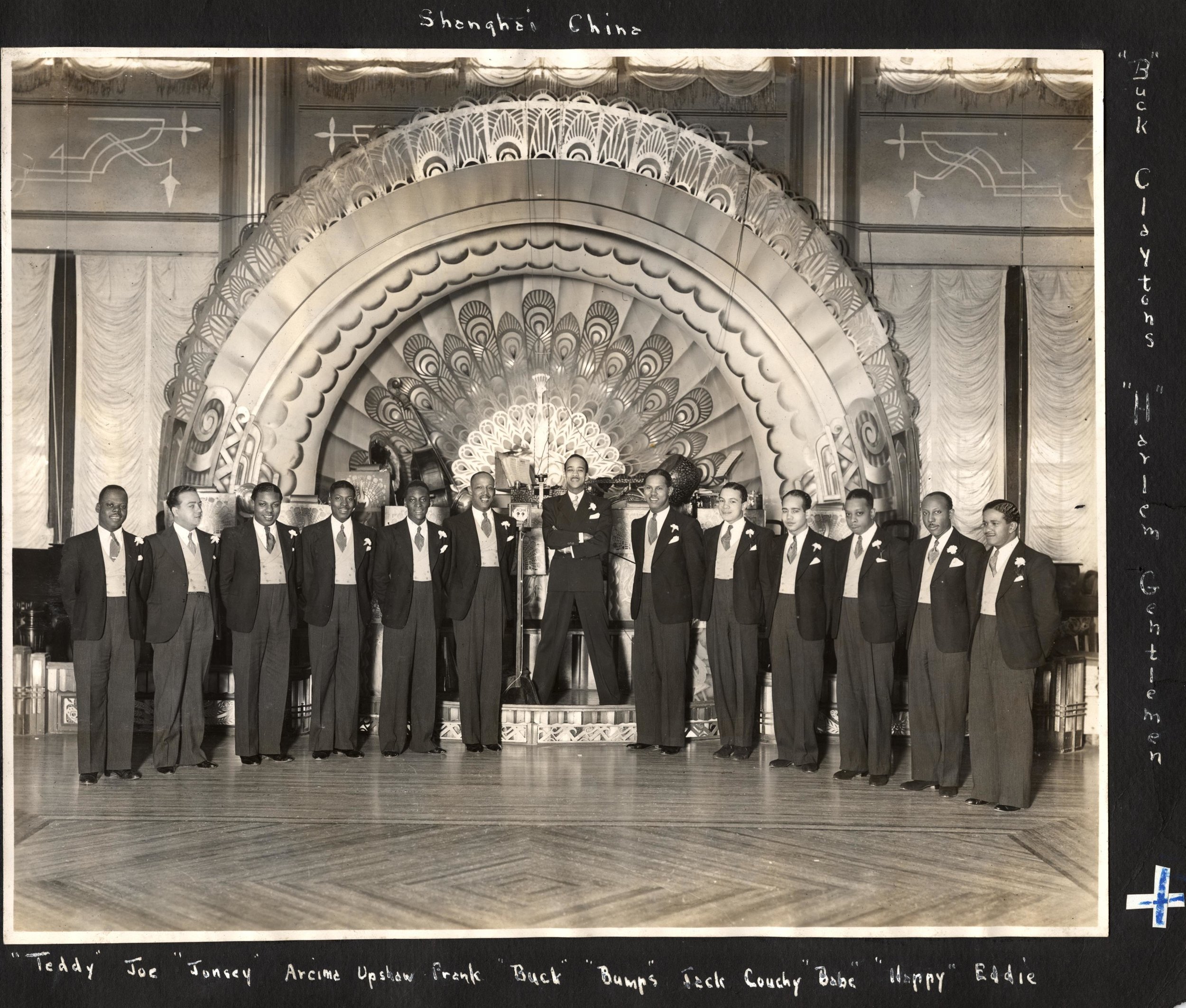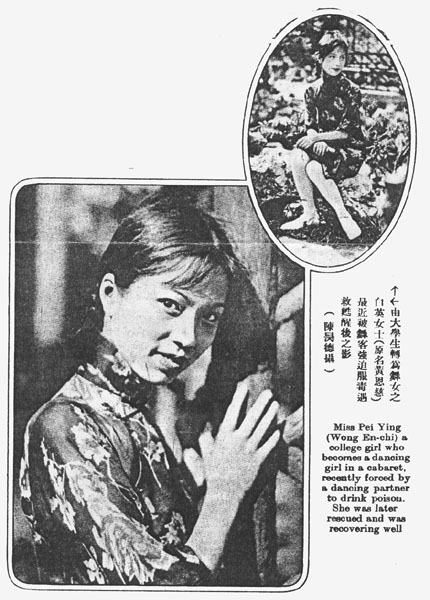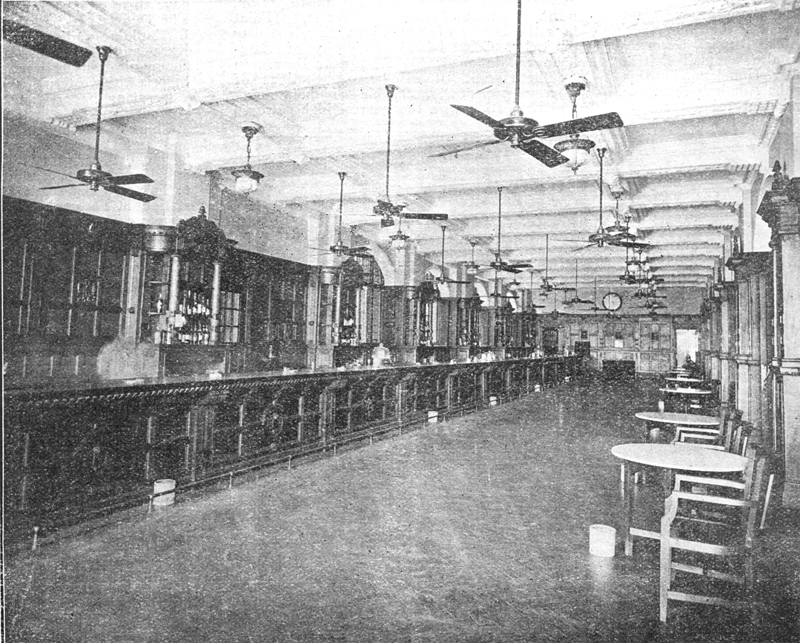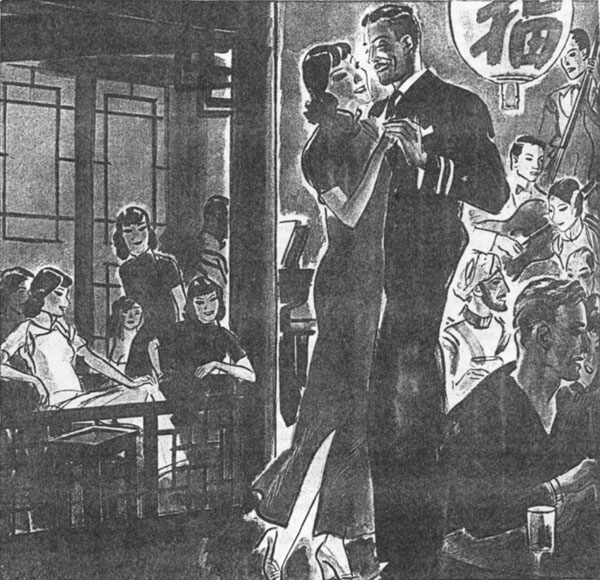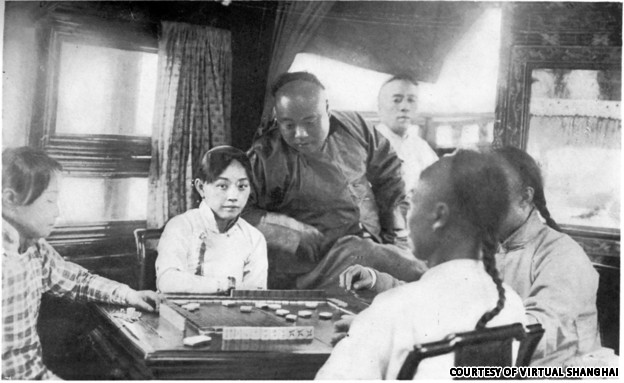(Current History Oct. 1937 p. 100-101)
Of the many evidences of Western influence to be found in Shanghai nothing is more remarkable than the dancing craze, which in the past few years has won an increasingly large number of followers amongst Chinese of all ages and of all stations except the very lowest. Shanghai has more than one hundred dance halls and cabarets, large and small, which provide employment for some five thousand professional dance partners, and the most popular of these establishments are crowded night after night. Some are open for business during the afternoons and even in one or more cases during the luncheon interval.
Nowadays the largest proportion by far of the dance partners are Chinese girls whose ages range from fifteen to twenty-five; most of them are in their late teens. This is a relatively new development, for ten years ago the partners to be found in Shanghai's dance halls, then much fewer in number and less pretentious in appearance, were virtually all Russian girls, coming for the most part from Harbin. About 1926, however, the first Chinese-owned dance hall, known as the Peach Blossom Place, was established with Chinese girls as partners, and since then numerous Chinese dance halls have come into existence. The latest addition, which, with a swimming pool and restaurant, covers several acres of ground, has more than one hundred dance partners, chiefly Chinese, but with a sprinkling of Russians and Eurasians.
All of the dance halls work on much the same basis, the girls receiving a fixed commission on dance tickets and drinks. In the better-class halls, which usually offer an occasional vaudeville turn between dances, a dollar will not buy more than two or three dance tickets, whereas in the "dives" of Hongkew it can be stretched to buy ten. Usually the management allows the girls to keep half of their earnings in the matter of dance tickets, paying a rather lower commission on drinks consumed either by the customer or by the girl at the customer's expense. In most of the better-class Chinese establishments, however, little liquor is consumed, the majority of the patrons limiting their indulgence to tea or some variety of soft drink. These places are usually conducted with a degree of decorum which would do credit to a church social. Family parties, ranging from toothless old grandmothers tottering along on bound feet to infants asleep in their mothers' arms, occupy tables by the hour, sipping tea and munching sweetmeats as they watch the dancing.
Although elegantly gowned and groomed and unquestionably attractive, a good 80 percent of the Chinese dancing partners are illiterate. Yet many who can neither write nor read their own language often speak English remarkably well and reveal a surprising amount of general knowledge, picked up in the course of conversation with their clients.
Most of the girls come from poor families in the hinterland of Shanghai, and in some cases have either been bought body and soul or else temporarily acquired under contract by older women, to whom they are obliged to give their earnings in return for food, clothes and lodging. The majority earn barely enough to live, but a few who enjoy the patronage of wealthy Chinese are said to make as much as £100 a month. In the larger dance halls the average girl probably earns about £10, the minimum anywhere about £2 a month, which is considerably higher than the average wage paid to factory girls. However, it must be remembered that a dancing girl is obliged to spend a considerable proportion of her earnings on cosmetics, clothes, and other feminine allurements.
The jazz craze has brought with it a number of social problems which are giving the Chinese authorities in Shanghai some cause for uneasiness. Many of the less reputable dance halls make a special point of catering to high school and university students, who tend increasingly to spend their leisure as well as their pocket money in these resorts. But it is not only the younger generation that is affected. Middle-aged fathers of families are to be found in the dance halls, and home life is apt to suffer in consequence. Occasionally this particular aspect of the problem is solved in a rather piquant fashion by the husband taking his wife with him when goes to the dance hall. It is now not uncommon, states a Shanghai newspaper, to see wives "patiently sitting on the sidelines whilst their husbands disport themselves upon the classy dance floors of Shanghai's palaces of pleasure. In order to pass the time more pleasantly some wives bring along books or other reading material, nor is knitting taboo in such cases."
-The Manchester Guardian

